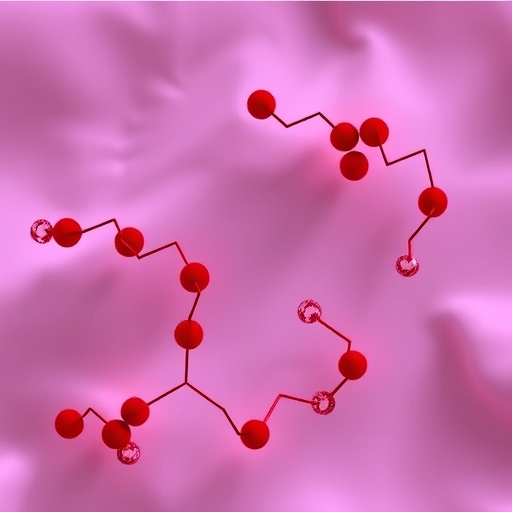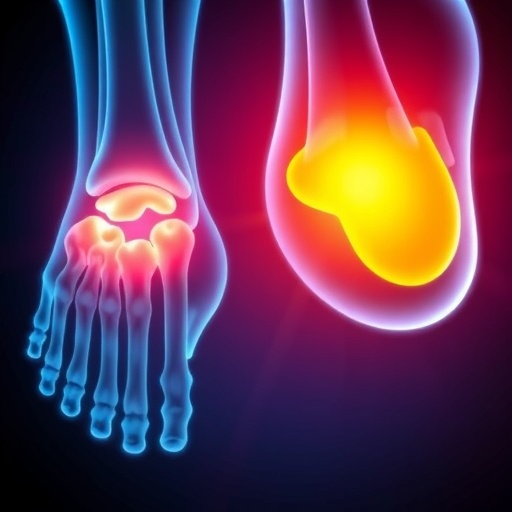In a significant stride towards addressing tropical diseases, a recent study sheds light on the potential of nitroquinolones and nitroquinolines as promising antitrypanosomal agents. This groundbreaking research, conducted by a team of dedicated scientists led by P.S. Dube, K.R. Francisco, and L.J. Legoabe, explores the synthesis and biological activity of these novel compounds against Trypanosoma, the parasite responsible for several debilitating illnesses, including Chagas disease and sleeping sickness. Given the urgent need for new therapeutic solutions, their findings offer hope in the ongoing battle against these infections, particularly in regions where these diseases are endemic.
The study’s primary goal was to synthesize a diverse library of nitroquinolones and nitroquinolines, compounds that have garnered attention in the medical community due to their unique structural characteristics. The researchers utilized various synthetic routes to create these molecules, employing established techniques in organic chemistry to ensure the production of high-yield, biologically active variants. The meticulous approach to synthesis underscores the importance of chemical diversity, which can lead to the discovery of effective treatments with minimized side effects.
Antitrypanosomal activity was rigorously evaluated through in vitro assays designed to assess the efficacy of the synthesized compounds against Trypanosoma species. This phase was crucial, as it provided insight into the compounds’ potential mechanisms of action and their effectiveness in inhibiting parasite growth. The results revealed several candidates with noteworthy activity, positioning them as potential leads for further development into therapeutic agents.
One of the salient features of this research is the exploration of structure-activity relationships (SAR). By manipulating various functional groups and chemical moieties on the nitroquinolone and nitroquinoline frameworks, the researchers could pinpoint specific structural elements that enhance or diminish antitrypanosomal activity. This meticulous analysis provided valuable insights that can inform future design strategies for more potent compounds.
Moreover, the study emphasizes the pharmacokinetic properties of the synthesized compounds, which are vital for assessing their viability as therapeutic agents. Understanding how these molecules behave in biological systems—encompassing absorption, distribution, metabolism, and excretion (ADME)—is essential for predicting their effectiveness and safety profiles. Preliminary evaluations suggest favorable pharmacokinetic characteristics for several of the newly synthesized nitro compounds, raising optimism about their future clinical application.
Resistance to existing medications poses a significant hurdle in the treatment of trypanosomiasis. As the researchers reviewed the mechanisms of resistance associated with current therapies, they highlighted the urgent necessity for novel compounds that can overcome these barriers. The innovative chemical structures of nitroquinolones and nitroquinolines present an attractive alternative to traditional drugs, potentially evading the resistance pathways that have limited treatment options.
In addition to their therapeutic potential, the safety of these compounds was evaluated through preliminary toxicity assays. Understanding the safety profile of new drugs is crucial, as adverse effects can significantly hinder their clinical utility. The results of these assessments will guide the researchers in selecting the most promising candidates for further testing and development.
The significance of this work extends beyond the laboratory. The researchers aim to bridge the gap between scientific discovery and real-world application by collaborating with pharmaceutical companies for the development of these compounds into marketable drugs. Such partnerships can expedite the journey from bench to bedside, ensuring that these potential treatments reach the populations that need them most.
Public health campaigns and awareness programs are equally essential in combating diseases caused by Trypanosoma. With the introduction of new therapies, it becomes imperative to educate healthcare professionals and at-risk populations about appropriate treatment options. The researchers highlight the importance of integrating scientific advancements with community health initiatives to maximize the impact of their findings.
As the global health landscape continues to evolve, the insights gained from this research contribute to the broader narrative of drug discovery and development. The quest to find effective treatments for neglected tropical diseases is often fraught with challenges, but studies like this instill hope. The potential for nitroquinolones and nitroquinolines to alter the treatment paradigm for trypanosomiasis could not only improve disease outcomes but also enhance the quality of life for millions affected by these infections.
Furthermore, the study opens new avenues for future research. The encouraging results obtained pave the way for additional investigations that can further elucidate the mechanisms of action and optimize the efficacy of these compounds. Innovations in medicinal chemistry combined with advanced screening techniques may yield even more potent derivatives, ultimately leading to a comprehensive arsenal against Trypanosoma infections.
In conclusion, the research on nitroquinolones and nitroquinolines stands as a testament to the power of interdisciplinary collaboration and the relentless pursuit of knowledge in the life sciences. The commitment of the research team to exploring these novel chemical entities promises a brighter future in the fight against neglected tropical diseases. As we confront the complexities of infectious diseases, studies like these serve as a reminder of the critical importance of continued investment in research and innovation.
This exciting line of inquiry encourages both scientific and public engagement in the challenge of tackling global health issues. The commitment shown by the research group exemplifies the potential that lies within the scientific community to generate impactful solutions. The ongoing dialogue between research efforts, healthcare policies, and community needs will be integral in shaping the future landscape of disease treatment and prevention.
In summary, the synthesis and evaluation of nitroquinolones and nitroquinolines represent a crucial development in the search for effective antitrypanosomal agents. By leveraging cutting-edge research methodologies and fostering collaborations, scientists are poised to make significant contributions to the field. The hope is that with these advancements, the burden of Trypanosoma-related diseases can be alleviated, eventually paving the way for healthier nations.
Subject of Research: Nitroquinolones and nitroquinolines as potential antitrypanosomal agents.
Article Title: Nitroquinolones and nitroquinolines: syntheses and antitrypanosomal activity.
Article References:
Dube, P.S., Francisco, K.R., Legoabe, L.J. et al. Nitroquinolones and nitroquinolines: syntheses and antitrypanosomal activity.
Mol Divers (2025). https://doi.org/10.1007/s11030-025-11405-1
Image Credits: AI Generated
DOI: https://doi.org/10.1007/s11030-025-11405-1
Keywords: Nitroquinolones, nitroquinolines, antitrypanosomal activity, drug synthesis, trypanosomiasis, tropical diseases.
Tags: antitrypanosomal agentsbiological activity of nitroquinolinesChagas disease treatmentchemical diversity in pharmaceuticalsin vitro assays for efficacynitroquinolones synthesisnovel drug discoveryorganic chemistry techniquessleeping sickness researchtherapeutic solutions for endemic diseasestropical disease researchTrypanosoma infections





